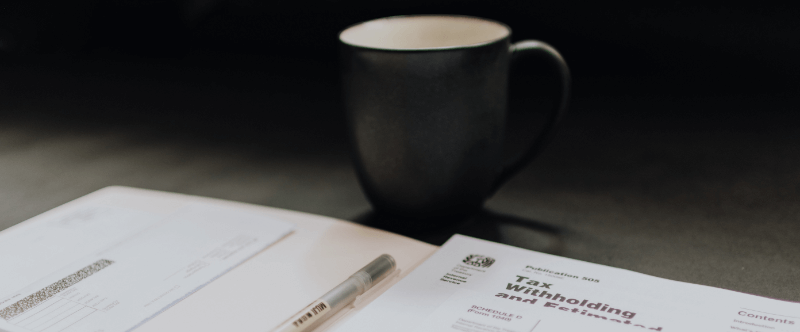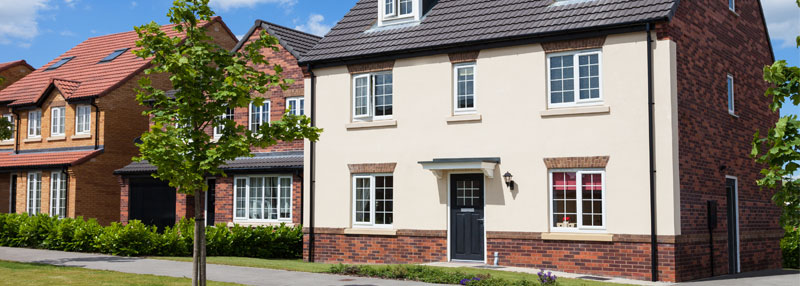If you are thinking of buying a house or you have bought a house in the past, you’ll probably be aware of the term Stamp Duty Land Tax. It can add thousands of pounds to homebuyers’ costs. But how much do you actually know about it and how it’s calculated?
Stamp Duty Land Tax has seen a few big alterations in the past few years, so if you had to pay it when you moved house six or more years ago and you haven’t had to think about it since, it’s important to get up to date on the changes.
Firstly, what is Stamp Duty Land Tax?
Stamp Duty Land Tax is a property transaction tax that must be paid if you buy a property or a piece of land over a certain price in England and Northern Ireland. These thresholds are £125,000 for a residential property, and £150,000 for non-residential.

The origins of Stamp Duty Land Tax in England go way back to 1694 during the reign of William and Mary as a transaction tax to raise money for war against France. It was raised on goods including hats, newspapers and medicines. It’s changed a lot over the decades since.
Home buyers paid 1% tax on properties costing more than £60,000 until 1997 when then-Chancellor Gordon Brown introduced bands above which higher payments would be charged. The upper band was set at £500,000. Over time, the lower and upper thresholds have been raised due to rapidly rising house prices, but Stamp Duty saw its biggest change in 2014 when this slab structure was scrapped and the system became more progressive.
How does Stamp Duty Land Tax work now?
You pay Stamp Duty Land Tax when you buy a freehold property, a new or existing leasehold, a property through a shared ownership scheme or if you are transferred land or property in exchange for payment, for instance if you take on a mortgage or buy a share in a house.
There are several rate bands for Stamp Duty and the tax is calculated on the part of the property purchase price falling within each band. Here are the rate bands for Stamp Duty rates in England and Northern Ireland:
£0 – £125,000 – 0% to pay
£125,001 – £250,000 – 2% to pay
£250,001 – £925,000 – 5% to pay
£925,001 – £1,500,000 – 10% to pay
£1,500,001+ – 12% to pay
Let’s say you buy a house for £275,000. Your Stamp Duty is calculated like this:
0% on the first £125,000 = £0
2% on the next £125,000 = £2,500
5% on the final £25,000 = £1,250
The total amount of Stamp Duty you would owe is £3,750. To work out how much tax you would pay on a property, you can use HMRC’s Stamp Duty Land Tax calculator.
When do I pay Stamp Duty Land Tax?
Buyers used to have 30 days to pay their Stamp Duty Land Tax, but new legislation reduced this to 14 days on March 1st 2019. This 14 day period usually begins on the date you completed the purchase of your home.
If you are using a solicitor or conveyancer for the purchase of your property, then they will often file your Stamp Duty tax return and pay the tax on your behalf on the day of completion and add the amount to their fees. This means that you don’t have to worry about paying it late, as doing so may result in penalties and interest.

That being said, it is legally your responsibility to ensure that your Stamp Duty Land Tax gets paid, so make sure you pay close attention to your solicitors fees to check that the tax has been sorted and when. It’s also important to note that even if the price of your new home is under £125,000 and not eligible for Stamp Duty Land Tax, you must still submit a return (unless you are exempt from doing so), even though you won’t need to actually pay anything.
Stamp Duty Land Tax for first-time buyers
Although the majority of home buyers will pay Stamp Duty Land Tax, there are certain groups of people who will be exempt or will get a discount. One of these is first-time buyers purchasing a property worth up to £300,000. To be classified as a first-time buyer, you must never have owned or had shares in a property in the UK or anywhere else in the world, and you must intend to be living in the property you’re purchasing as your only or main residence. This applies to everyone buying the property, if more than one person.

For properties costing up to £500,000, a first-time buyer won’t pay Stamp Duty on the first £300,000, and only on the remaining amount up to £200,000. If the property in question is worth over £500,000, then standard Stamp Duty Land Tax rates will apply. As of October 2018, first-time buyers under Shared Ownership schemes can also now claim this Stamp Duty relief on homes worth up to £500,000.
Do I pay Stamp Duty Land Tax if I am buying a second home?
When buying a second home, an extra 3% in Stamp Duty on top of current rates for each band apply and this increase rate applies to any properties bought for £40,000 or more. Anything other than your main residence is classed as a second home. This could be a holiday let, an investment property, a buy-to-let, or somewhere that you’re helping a family member to buy. This doesn’t however apply to caravans, mobile homes, plots of land or houseboats.
Whilst Stamp Duty is charged on a tiered basis, the 3% surcharge for second properties works as a slab tax. Let’s say for instance that you purchased a second home at £300,000. You would pay £5,000 in Stamp Duty as normal, but you would also pay the surcharge of £9,000 (3% of the property price). In total, you would need to pay £14,000 in Stamp Duty.

So, what about if you buy a second property with the intent of it being your main residence, and there is a delay in selling your current main residence? You will still have to pay the higher Stamp Duty rates as you will be the owner of two properties. However, if you manage to sell your previous main residence within three years of buying your second, then you can apply for a refund of the higher Stamp Duty rates.
You also won’t be liable for the 3% surcharge if the second property you are buying will replace your main residence. If this is the case, it’s definitely wise to seek advice from a solicitor or conveyancer such as us here at Bromfield Legal, as this can be a complex area to navigate.
Stamp Duty Land Tax can certainly be a lot to take in – particularly if your situation isn’t completely straight forward. The best thing to do is talk to an expert. We are well placed to help you with your Stamp Duty questions, so get in touch with us today.


